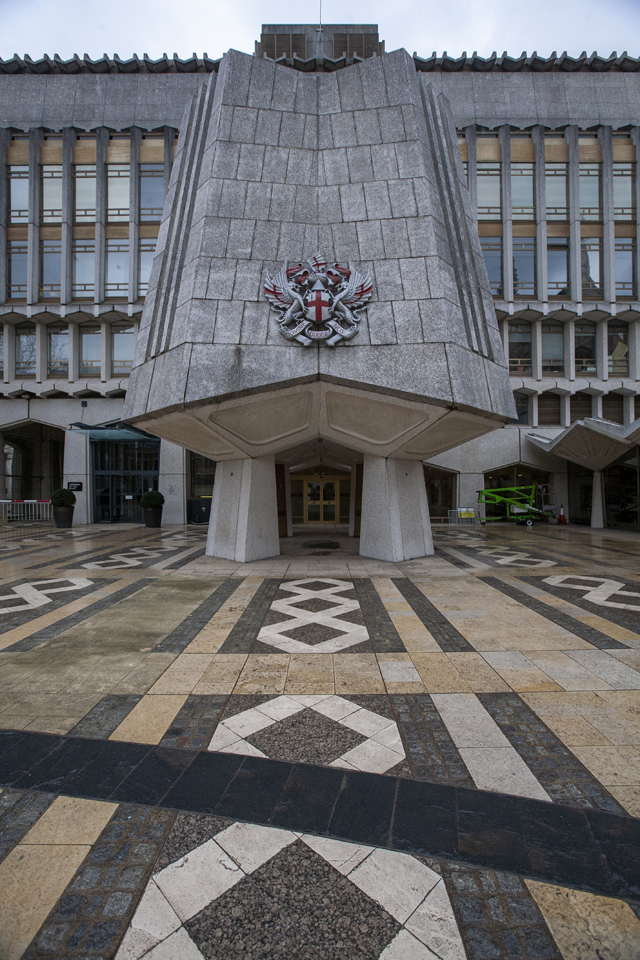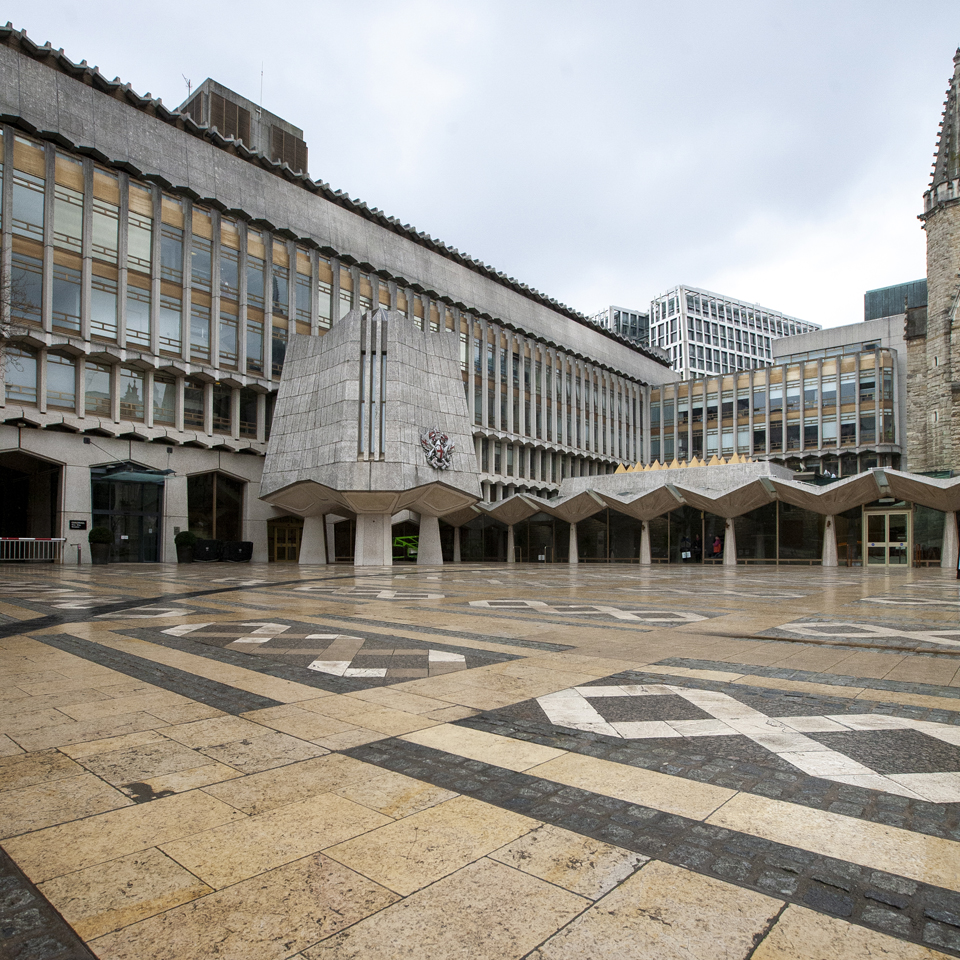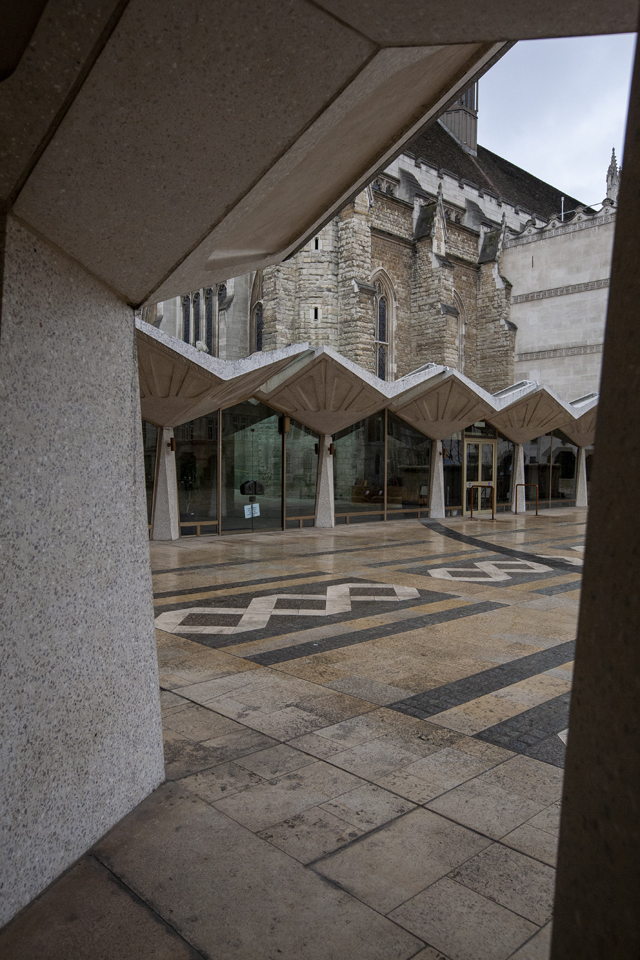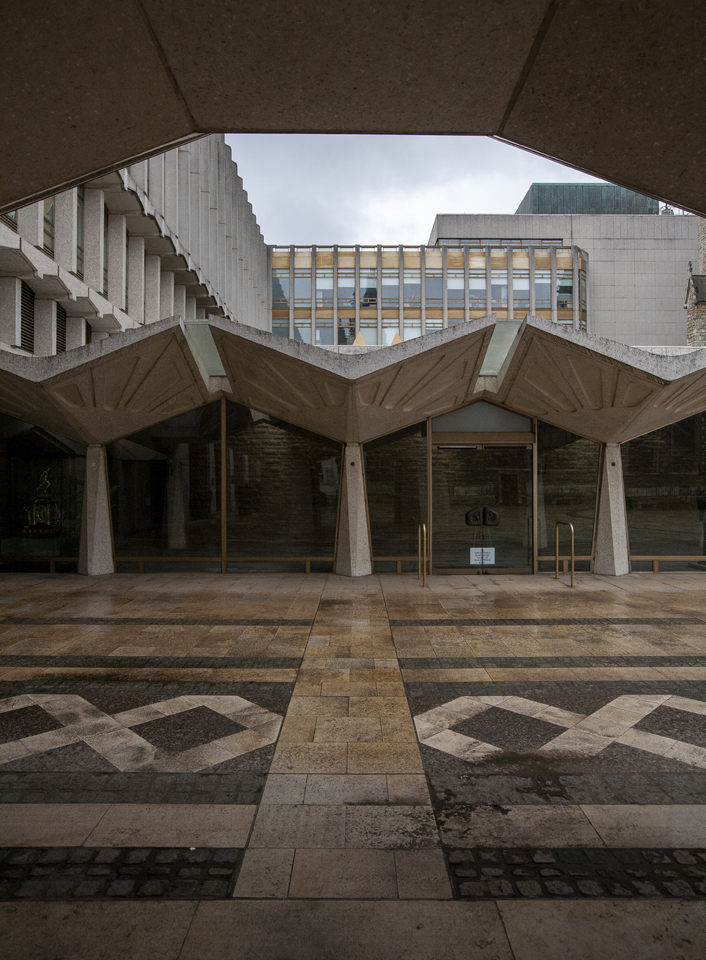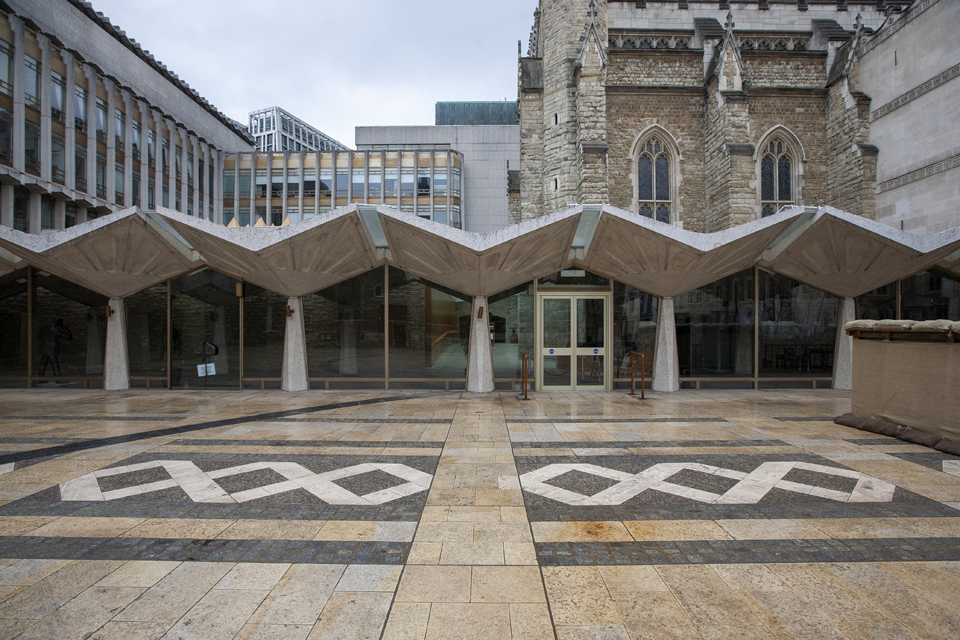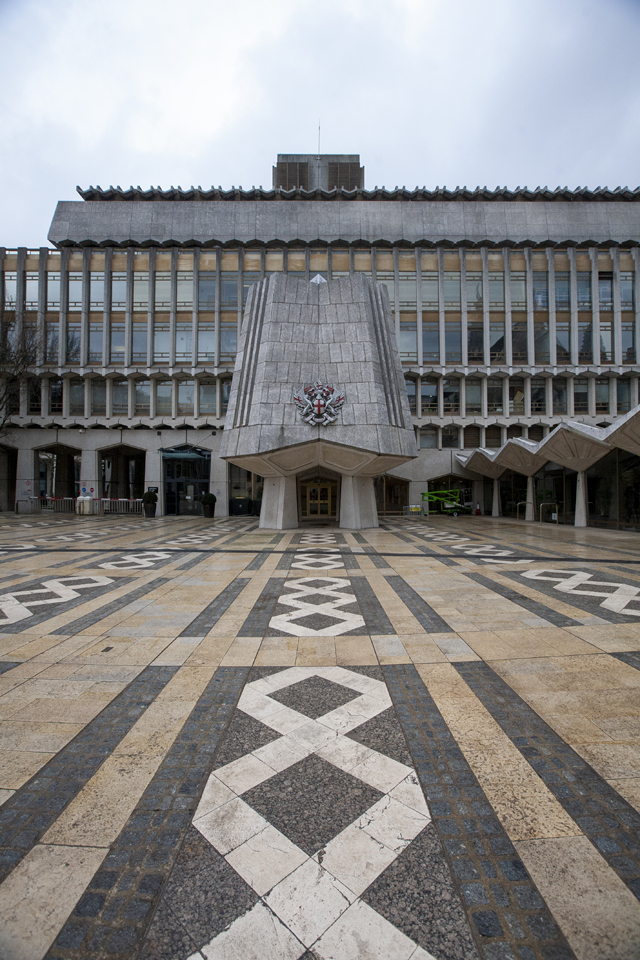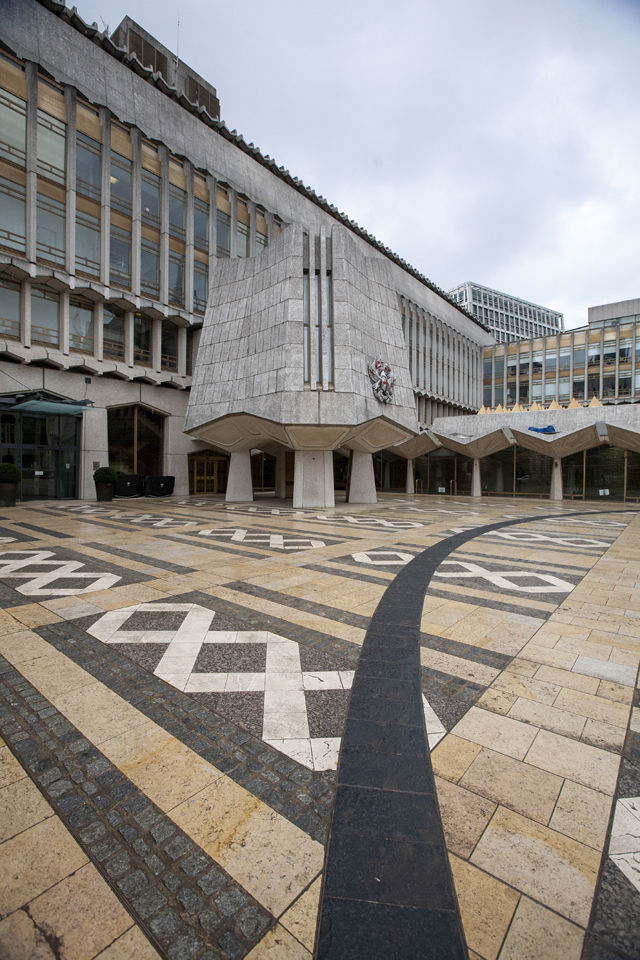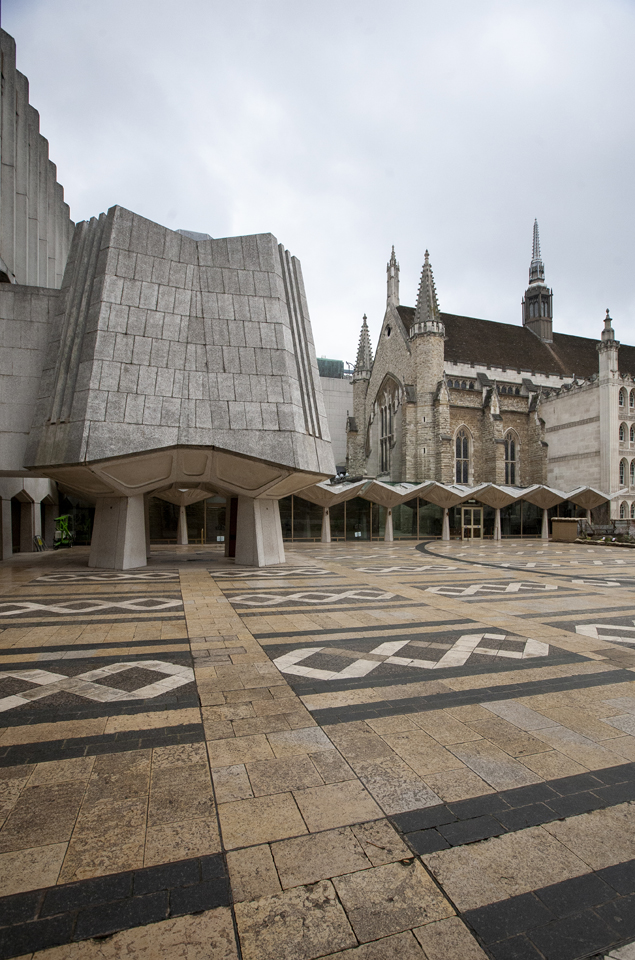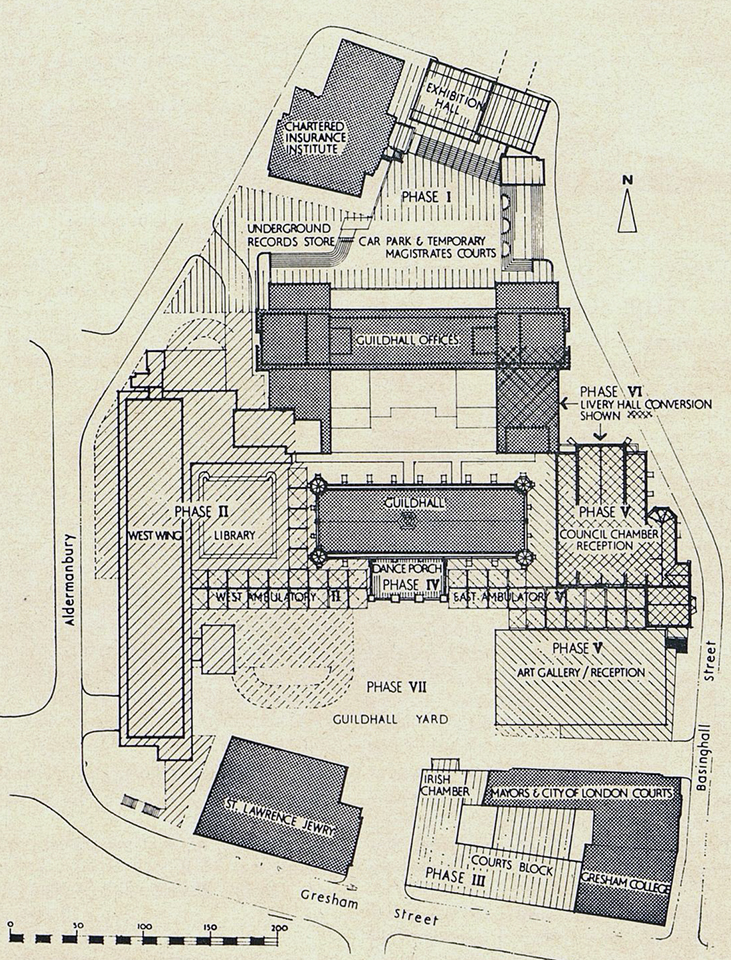Guildhall Library and Alderman's Court
1974
The history of Sir Giles Gilbert Scott’s involvement with London’s Guildhall spans the war and was continued by his practice, led by Richard Gilbert Scott, Sir Giles Scott, Son and Partner. After receiving the commission via the City Corporation in 1934 several proposals came forward and the first penned for construction was disrupted by the outbreak of war. The library, Alderman’s Court and west ambulatory were the second phase of post-war buildings. In the first, the Guildhall was repaired and new offices were built to the north, completed in 1955. The detailed design of phase two was revisited following the death of Giles Gilbert Scott in 1960. The lengthy process of approval for this historic site in the middle of the financial district involved the Royal Fine Art Commission, The Ministry of Public Building and Works and a public enquiry. The result is a resolutely unmodern scheme masquerading as contemporary construction. In a concerted effort to invoke medieval character through heraldry and pointed arches the 1974 building feels like a mid-50s Festival Style scheme on steroids. Gold spandrel panels and mullions give a sense that a ‘glorious Technicolor’ filter has been applied to the entire surface – one half expects a leather clad Errol Flynn to appear from the shadows, bow in hand. The size of the Guildhall Yard was increased during the phased development and it is into the yard that the main feature of this phase projects in the manner of a chapterhouse - the polygonal Alderman’s Court, sat atop massive tapering concrete columns that form vaulting to the underside of the chamber. The whole ensemble is suitably civic, verging on chivalrous, and was listed in 2021 due to its apparently ‘elegant modernism’ and ‘sensitive response’ to its historic context [1].
[1] Architects’ Journal, 16 August 2021.
